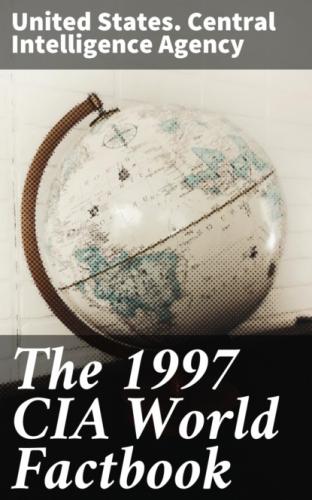Imports: total value : $2 billion (1996 est.) commodities: machinery, transport equipment, construction materials, food products, consumer goods partners: Singapore, Hong Kong, Japan, China, Malaysia, Thailand
Debt - external: $5.5 billion (FY94/95 est.)
Economic aid: recipient: ODA, $61 million (1993)
Currency: 1 kyat (K) = 100 pyas
Exchange rates: kyats (K) per US$1 - 6.0600 (1997), 5.9176 (1996), 5.6670 (1995), 5.9749 (1994), 6.1570 (1993), 6.1045 (1992); unofficial - 160–170 (1996)
Fiscal year: 1 April - 31 March
@Burma:Communications
Telephones: 122,195 (1993 est.)
Telephone system: meets minimum requirements for local and intercity service for business and government; international service is good domestic: NA international: satellite earth station - 1 Intelsat (Indian Ocean)
Radio broadcast stations: AM 2, FM 1, shortwave 0 (1985 est.) note: radiobroadcast coverage is limited to the most populous areas
Radios: NA
Television broadcast stations: 1 (1988 est.)
Televisions: 88,000 (1992 est.)
@Burma:Transportation
Railways: total : 3,569 km narrow gauge: 3,569 km 1.000-m gauge (1995)
Highways: total: 27,600 km paved: 3,340 km unpaved : 24,260 km (1995 est.)
Waterways: 12,800 km; 3,200 km navigable by large commercial vessels
Pipelines: crude oil 1,343 km; natural gas 330 km
Ports and harbors: Bassein, Bhamo, Chauk, Mandalay, Moulmein,
Myitkyina, Rangoon, Akyab (Sittwe), Tavoy
Merchant marine: total: 52 ships (1,000 GRT or over) totaling 657,498 GRT/901,418 DWT ships by type : bulk 16, cargo 18, chemical tanker 5, container 2, oil tanker 5, passenger-cargo 3, refrigerated cargo 1, vehicle carrier 2 (1996 est.)
Airports: 73 (1996 est.)
Airports - with paved runways: total: 54 over 3,047 m: 2 2,438 to 3,047 m: 2 1,524 to 2,437 m: 13 914 to 1,523 m : 9 under 914 m: 28 (1996 est.)
Airports - with unpaved runways: total : 19 1,524 to 2,437 m: 3 914 to 1,523 m: 16 (1996 est.)
Military
Military branches: Army, Navy, Air Force
Military manpower - military age: 18 years of age
Military manpower - availability: males age 15–49: 12,037,009 females age 15–49: 11,846,381 (1997 est.) note: both sexes liable for military service
Military manpower - fit for military service: males : 6,434,452 (1997 est.) females: 6,317,112 (1997 est.)
Military manpower - reaching military age annually: males: 480,893 females: 462,314 (1997 est.)
Military expenditures - dollar figure: $135 million (FY95/96)
Military expenditures - percent of GDP: NA%
Transnational Issues
Disputes - international: none
Illicit drugs: world's largest illicit producer of opium (2,560 metric tons in 1996 - a 9% increase over 1995) and a minor producer of cannabis for the international drug trade; surrender of drug warlord KHUN SA's Mong Tai Army in January 1996 was hailed by Rangoon as a major counternarcotics success, but lack of serious government commitment and resources continue to hinder the overall antidrug effort; growing role in the production of methamphetamines for regional consumption ______________________________________________________________________
BURUNDI
Introduction
Current issues: in a number of waves since October 1993, hundreds of thousands of refugees have fled the ethnic violence between the Hutu and Tutsi factions in Burundi and crossed into Rwanda, Tanzania, and Democratic Republic of the Congo, formerly Zaire; since October 1996, an estimated 92,000 Burundi Hutus who fled to Zaire have been forced to return to Burundi by Tutsi rebel forces in Zaire, leaving an estimated 35,000 still dispersed there; in Burundi, the ethnic violence between the Hutus and the Tutsis continued in 1996, causing an estimated additional 150,000 Burundi Hutus to flee to Tanzania, thus raising their numbers in that country to about 250,000
@Burundi:Geography
Location: Central Africa, east of Democratic Republic of the Congo
Geographic coordinates: 3 30 S, 30 00 E
Map references: Africa
Area: total: 27,830 sq km land: 25,650 sq km water: 2,180 sq km
Area - comparative: slightly smaller than Maryland
Land boundaries: total: 974 km border countries: Democratic Republic of the Congo 233 km, Rwanda 290 km, Tanzania 451 km
Coastline: 0 km (landlocked)
Maritime claims: none (landlocked)
Climate: equatorial; high plateau with considerable altitude variation (772 m to 2,760 m); average annual temperature varies with altitude from 23 to 17 degrees centigrade but is generally moderate as the average altitude is about 1,700 m; average annual rainfall is about 150 cm; wet seasons from February to May and September to November, and dry seasons from June to August and December to January
Terrain: hilly and mountainous, dropping to a plateau in east, some plains
Elevation extremes: lowest point: Lake Tanganyika 772 m highest point: Mount Heha 2,760 m
Natural resources: nickel, uranium, rare earth oxides, peat, cobalt, copper, platinum (not yet exploited), vanadium
Land use: arable land: 44% permanent crops: 9% permanent pastures : 36% forests and woodland: 3% other : 8% (1993 est.)
Irrigated land: 140 sq km (1993 est.)
Natural hazards: flooding, landslides
Environment - current issues: soil erosion as a result of overgrazing and the expansion of agriculture into marginal lands; deforestation (little forested land remains because of uncontrolled cutting of trees for fuel); habitat loss threatens wildlife populations
Environment - international agreements: party to: Endangered Species signed, but not ratified : Biodiversity, Climate Change, Desertification, Law of the Sea, Nuclear Test Ban
Geography - note: landlocked; straddles crest of the Nile-Congo watershed
@Burundi:People
Population: 6,052,614 (July 1997 est.)
Age structure: 0–14 years: 47% (male 1,425,071; female 1,418,957) 15–64 years : 50% (male 1,490,426; female 1,558,362) 65 years and over: 3% (male 63,225; female 96,573) (July 1997 est.)
Population growth rate: 2.11% (1997 est.)
Birth rate: 42.33 births/1,000 population (1997 est.)
Death rate: 15.12 deaths/1,000 population (1997 est.)
Net migration rate: −6.12 migrant(s)/1,000 population (1997 est.)
Sex ratio: at birth: 1.03 male(s)/female under 15 years : 1 male(s)/female 15–64 years: 0.96 male(s)/female 65 years and over: 0.66 male(s)/female total population: 0.97 male(s)/female (1997 est.)
Infant mortality rate: 100.5 deaths/1,000 live births (1997 est.)
Life expectancy at birth: total population: 49 years male: 47.91 years female : 50.12 years (1997 est.)
Total
